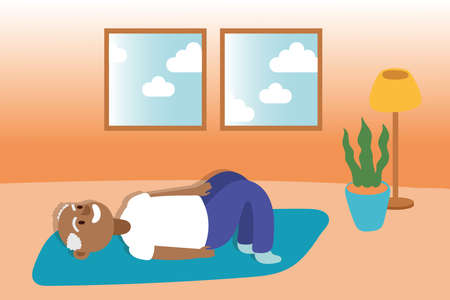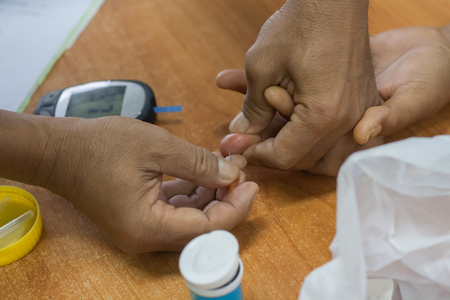Understanding Pelvic Pain Disorder
Pelvic pain disorder is a health condition that affects both men and women in India, often causing discomfort in the lower abdomen or pelvic region. While it is more commonly discussed among women due to issues like menstrual cramps and reproductive health, many Indian men also experience pelvic pain but may not seek help because of stigma or lack of awareness. In urban centres like Mumbai or Delhi, as well as rural communities across the country, pelvic pain remains an underreported issue. Some people believe it is just a normal part of life, especially for women, and do not realise that persistent pain can signal an underlying disorder. Others might mistake it for digestive problems or urinary tract infections. These misconceptions often delay proper diagnosis and care. Recognising the reality and prevalence of pelvic pain disorder is the first step towards seeking timely medical attention and understanding that relief is possible with the right guidance and culturally relevant remedies.
Common Causes of Pelvic Pain in India
Pelvic pain is a concern that touches many lives in India, affecting women and men alike. Understanding its causes within the Indian context is essential for both effective diagnosis and holistic care. Let us gently explore the typical reasons behind pelvic pain, taking into account our unique lifestyle, health conditions, and socio-cultural influences.
Lifestyle Factors
Everyday habits play a significant role in pelvic health. In India, prolonged sitting—whether at offices or during long commutes—can contribute to muscle tension and discomfort in the pelvic area. Additionally, traditional postures like squatting during meals or household chores may sometimes strain pelvic muscles if not done mindfully. Irregular eating patterns, common during festivals or fasting periods, may also affect digestive health and indirectly lead to pelvic discomfort.
Infections and Chronic Conditions
Pelvic pain often arises from infections or chronic medical conditions. Here is a simple comparison of common causes:
| Cause | Description | Prevalence in India |
|---|---|---|
| Urinary Tract Infection (UTI) | Bacterial infection of urinary tract; more common among women. | High, especially during summer months due to dehydration. |
| Reproductive Tract Infections (RTI) | Includes conditions like vaginitis and cervicitis. | Significant, due to lack of menstrual hygiene awareness in some areas. |
| Endometriosis | Tissue similar to uterine lining grows outside uterus. | Underdiagnosed but increasingly recognised in urban centres. |
| Pelvic Inflammatory Disease (PID) | Bacterial infection of female reproductive organs. | Moderate; linked with untreated RTIs. |
| Irritable Bowel Syndrome (IBS) | Chronic digestive condition causing abdominal/pelvic pain. | Growing, particularly with dietary changes and stress. |
| Kidney Stones | Hard deposits forming in kidneys, causing severe pain radiating to pelvis. | Common due to climatic heat and low water intake. |
Socio-Cultural Influences Unique to India
Menstrual Health Practices
Cultural taboos around menstruation sometimes prevent open discussions about menstrual hygiene or pain management. Limited access to sanitary products can increase risk of infections that cause pelvic pain, especially in rural communities.
Mental & Emotional Health Considerations
Social expectations—such as pressures related to marriage, fertility, or family roles—may contribute to stress-induced pelvic pain or worsen symptoms for those already experiencing discomfort. This connection between mind and body is increasingly recognised by both Ayurveda and modern medicine in India.
The Importance of Early Recognition
If you experience persistent pelvic pain, it’s important to consult a healthcare provider familiar with the local context. Early recognition can help address root causes, whether physical or emotional, leading to better outcomes and relief tailored for your everyday life in India.

3. How Pelvic Pain is Diagnosed
Understanding the diagnosis of pelvic pain disorder in India involves a thoughtful blend of modern medical approaches and unique cultural perspectives. Early identification is essential, as many women may initially hesitate to seek help due to social stigma or familial expectations. In Indian households, decisions about health often involve close family consultation, with mothers, elders, or spouses playing a pivotal role in encouraging doctor visits.
Overview of Medical Diagnosis
When visiting a gynaecologist or healthcare provider, the process usually starts with a detailed discussion of symptoms and personal health history. Indian doctors are generally empathetic and strive to create a comfortable environment for patients, acknowledging the sensitive nature of pelvic pain. Doctors may ask about menstrual cycles, urinary habits, sexual health, and any recent stress or trauma.
Common Clinical Tests and Examinations
The diagnostic journey typically includes:
- Physical Examination: A gentle pelvic exam helps identify tenderness, swelling, or other abnormalities.
- Ultrasound Scans: Widely available in urban clinics across India, ultrasounds provide non-invasive imaging to check for fibroids, cysts, or endometriosis.
- Blood and Urine Tests: These help rule out infections like UTIs or underlying hormonal imbalances common among Indian women.
- Laparoscopy: In complex cases, minimally invasive laparoscopy may be suggested at larger hospitals to get a closer look at internal organs.
The Influence of Family and Cultural Dynamics
In India’s joint family system, it is common for women to be accompanied by mothers-in-law or sisters during appointments. This support can be comforting but sometimes leads to hesitation in discussing intimate details. Healthcare providers are increasingly aware of these nuances and encourage privacy when necessary so patients feel safe sharing their concerns openly.
The path to diagnosis is not just medical—it is deeply woven into the fabric of Indian society where trust in doctors and family involvement go hand-in-hand. Respecting both scientific knowledge and emotional wellbeing ensures that women receive holistic care tailored to their needs and cultural context.
4. Conventional Treatment Approaches
When managing pelvic pain disorder in India, several conventional medical treatment options are available. The approach taken often depends on the root cause identified during diagnosis, the severity of symptoms, and individual patient needs. Indian healthcare offers a mix of modern medicine and accessible care, but navigating these choices with proper guidance is essential.
Medical Treatments Commonly Used
| Treatment Option | Description | Availability in India |
|---|---|---|
| Pain Relievers (NSAIDs) | Medications like ibuprofen or paracetamol to reduce inflammation and relieve pain. | Widely available at pharmacies across urban and rural areas. |
| Antibiotics | Prescribed if infection is identified as the cause, such as urinary tract infections or PID. | Easily accessible; must be prescribed by a doctor. |
| Hormonal Therapies | Birth control pills, hormone injections, or IUDs may be suggested for pain linked to menstrual cycles or endometriosis. | Available in most hospitals and clinics, especially in cities. |
| Physical Therapy | Pelvic floor exercises guided by physiotherapists to strengthen muscles and relieve chronic pain. | Growing availability, especially in metropolitan cities like Mumbai, Delhi, and Bangalore. |
| Surgical Interventions | Laparoscopy or other procedures for severe cases such as fibroids or endometriosis not responding to medication. | Offered in multispeciality hospitals and larger government facilities. |
Accessibility of Medical Care in India
The accessibility of these treatments varies based on location. Urban centres typically have multispeciality hospitals and private clinics with experienced gynaecologists and urologists. In smaller towns and villages, primary health centres may offer basic care, but referral to district hospitals is common for specialised treatments. Many Indian women prefer consulting female doctors due to cultural comfort. Government schemes like Ayushman Bharat help subsidise costs for eligible families, making treatment more affordable.
When to Consult a Gynaecologist or Urologist?
- If pelvic pain persists for more than a few days despite home remedies or over-the-counter medication.
- If the pain is severe enough to interfere with daily activities or causes sleep disturbances.
- If you notice abnormal vaginal discharge, fever, blood in urine, or sudden worsening of symptoms.
- If you have a known history of reproductive health issues like endometriosis or PCOS and experience new symptoms.
- If you have difficulty accessing specialist care locally, consider telemedicine consultations which are increasingly popular in India through platforms like Practo or mfine.
Your Comfort Matters
Remember that seeking timely medical advice is important for accurate diagnosis and effective relief. In India, discussing pelvic health can feel uncomfortable due to social stigma, but prioritising your well-being is an act of self-care. A gentle reminder: reach out to a trusted healthcare provider when needed—early intervention often leads to better outcomes and peace of mind.
5. Indian Home Remedies and Lifestyle Modifications
Pelvic pain can deeply affect daily life, but many Indian home remedies and lifestyle changes offer gentle relief rooted in centuries of tradition. Here are some practical ways to ease pelvic pain using Ayurveda, yoga, and familiar ingredients from Indian kitchens.
Ayurvedic Approaches for Pelvic Pain
Ayurveda sees pelvic pain as an imbalance of doshas, especially Vata. Simple self-care rituals can bring comfort:
- Abhyanga (Oil Massage): Warm sesame or castor oil gently massaged onto the lower abdomen soothes muscle tension and improves circulation.
- Herbal Remedies: Ashwagandha and Shatavari powders are known for their calming effect on pelvic muscles. Mix a teaspoon with warm milk for relaxation.
- Sitz Baths: Soaking in warm water infused with neem leaves or turmeric can reduce inflammation and discomfort.
Yoga for Pelvic Health
Yoga is an integral part of Indian wellness. Certain poses help relieve tightness and improve blood flow to the pelvic region:
- Supta Baddha Konasana (Reclining Butterfly Pose): Opens the hips and relaxes the pelvic floor muscles.
- Setu Bandhasana (Bridge Pose): Strengthens the lower back and gently stretches the pelvic area.
- Ananda Balasana (Happy Baby Pose): Releases tension in the hips and inner thighs.
Practicing these asanas daily, along with deep breathing, brings calm and comfort.
Home Remedies from the Indian Kitchen
The Indian kitchen is full of natural soothers:
- Turmeric Milk: A glass of warm haldi doodh (turmeric milk) at night helps reduce inflammation from within.
- Cumin & Ajwain Water: Boil a teaspoon each of jeera (cumin) and ajwain seeds in water, strain, and sip to relieve bloating and cramps.
- Ginger Tea: Fresh ginger boiled in water offers relief from pain and promotes digestion.
Dietary Adjustments Rooted in Tradition
A balanced diet plays a big role in managing pelvic pain:
- Add Fibre-Rich Foods: Whole grains like bajra, jowar, fresh fruits, and vegetables prevent constipation, which can worsen pelvic discomfort.
- Avoid Spicy & Oily Foods: Limiting fried snacks and heavy curries helps reduce inflammation.
- Hydrate Well: Drinking plenty of water or coconut water keeps your body cool and supports healing.
Caring for Yourself with Gentle Routines
Mild walks in nature, keeping a regular sleep schedule, and practicing mindfulness—whether through prayer or meditation—are all ways to support your body’s healing journey. Remember, these remedies are meant to complement medical care. Listening to your body’s needs with kindness is always at the heart of Indian wisdom.
6. Coping Emotionally and Physically
Living with pelvic pain disorder can be challenging, both physically and emotionally. In India, where family ties and community bonds are strong, finding support from loved ones is often a powerful source of comfort. Let us explore some ways to cope that blend emotional well-being with culturally familiar resources.
Emotional Health: Finding Balance
Pelvic pain can affect your mood, sleep, and everyday life. It is important to acknowledge your feelings—whether it is frustration, sadness, or anxiety—and remind yourself that you are not alone. Simple practices such as mindfulness meditation (Dhyan), chanting mantras, or practicing Pranayama breathing can help calm the mind and soothe stress. Many women find that keeping a diary or sharing their journey with a close friend helps lighten emotional burdens.
Social Support Systems
In Indian culture, family and friends play an essential role in healing. Talking openly about your pain with your spouse, parents, or siblings may offer relief and practical help at home. If you feel comfortable, joining women’s groups at your local mandir, gurdwara, or community centre can provide understanding companions who may have faced similar health issues. Traditional gatherings like kitty parties or bhajan sessions also offer opportunities to connect and share experiences in a supportive environment.
Community Resources for Indian Readers
Many cities in India now have patient support groups for women’s health conditions. Ask your doctor if there are any support circles at nearby hospitals such as Apollo or Fortis. Non-profit organisations like FOGSI (Federation of Obstetric and Gynaecological Societies of India) sometimes host workshops on chronic pain management. You may also explore online forums in regional languages for advice and encouragement—platforms like Practo or Momspresso are growing in popularity among Indian women.
When to Seek Professional Help
If pelvic pain leads to persistent low mood, loss of interest in daily life, or strains relationships, please consider seeking help from a mental health professional (such as a counsellor or psychologist). Many clinics in India now offer confidential counselling services in Hindi, Tamil, Bengali, and other regional languages—so you can express yourself comfortably.
Remember: Healing is not just physical; it is also emotional. By drawing strength from traditional practices, supportive relationships, and community resources unique to India, you can find hope and resilience on your journey with pelvic pain disorder.


